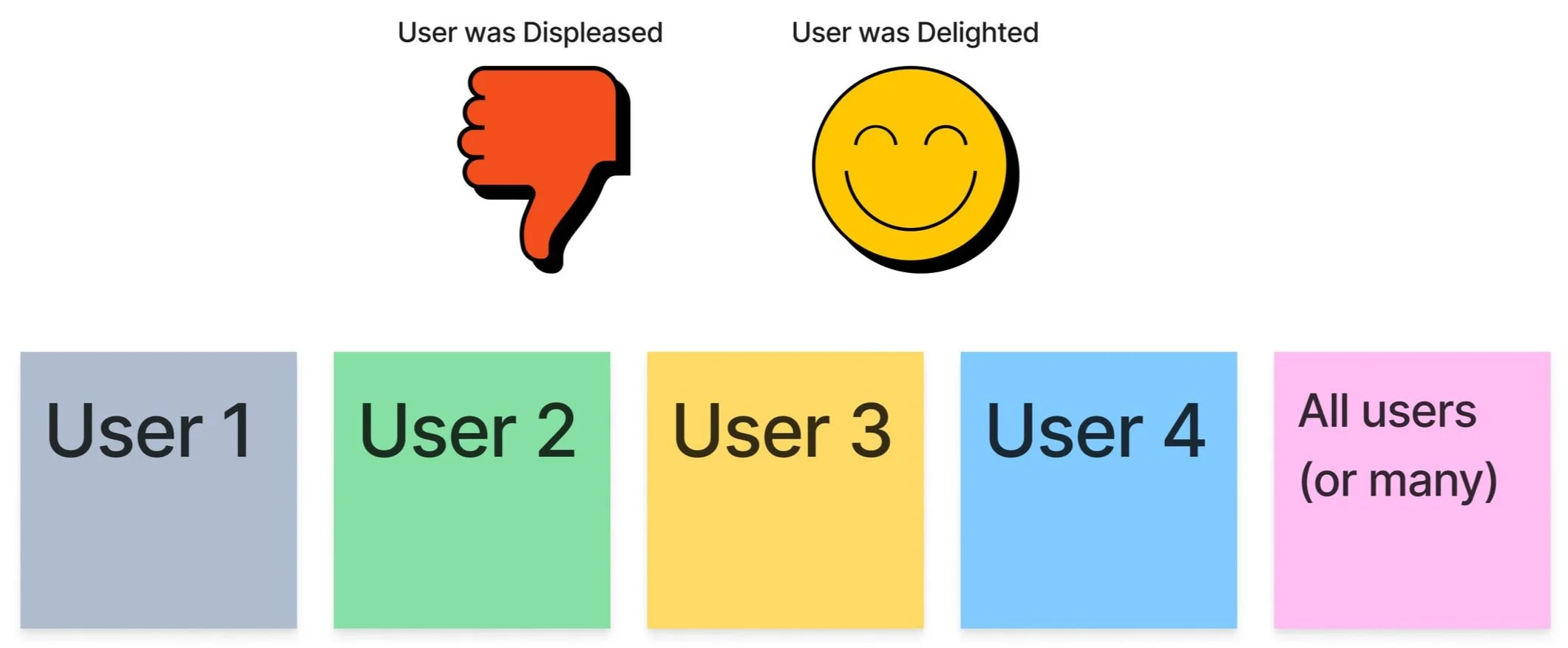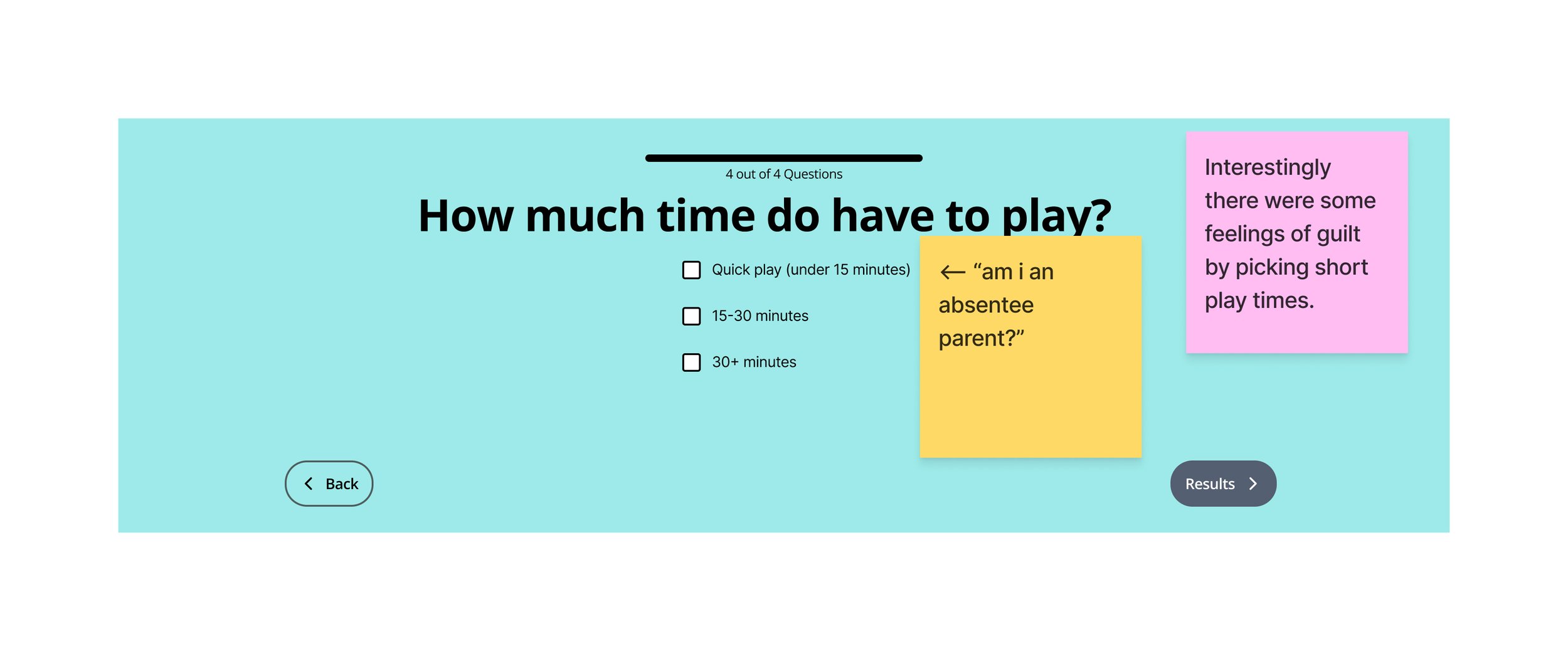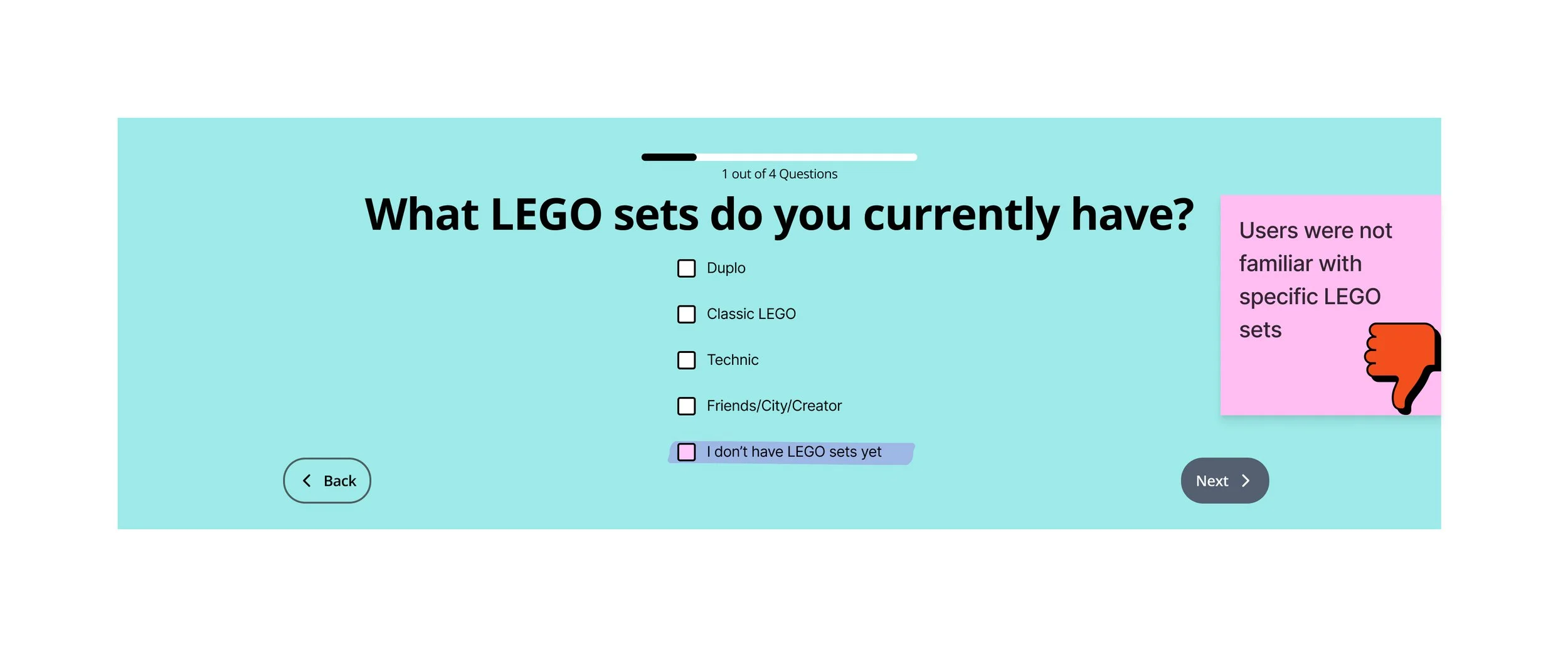Unlocking the Learning Potential of Lego’s Online Shop
1. Setting the Scene
"I’m not educated in early childhood development, so I don’t know exactly how to teach my child in a fun way. I don’t want to have to get a degree to figure it out."
How might we introduce information about the learning aspects of our products in a relevant and playful manner for parents?
In essence, the task was to translate the value of Learning Through Play (LTP) into the Lego Shop website.The research in Learning Through Play is deeply connected with the Lego sets. All the research on this website informs the design of the sets.
This clears up the connection between sites, but also highlights a significant gap: while the research in LTP is rich and informative, it wasn’t always accessible or clear to parents when choosing a Lego set for their child.
2. Diving Into Research
I started by analyzing the Lego Online Shop and the Learning Through Play website, focusing on branding, website structure, and the target audience. Once I had a solid understanding of the current product, I designed a survey to gather insights into what parents look for when buying toys.
Next, I conducted interviews to explore these insights further. The most impactful moment came when a parent said: "I’m not educated in early childhood development, so I don’t know exactly how to teach my child in a fun way. I don’t want to have to get a degree to figure it out."
This was my “aha” moment—the solution needed to guide parents in a playful yet practical way without overloading them with information.
3. Crafting the Solution
Inspired by interactive, time-saving quizzes commonly found on e-commerce sites, I thought something similar could work well here. It would take the form of a filter system disguised as a quiz, where short, engaging questions led parents to curated Lego sets tailored to their child’s needs and interests.

Results Page Sketch

Results Page Wireframe

Results Page High-Fidelity (First iteration)
4. Challenges and Feedback
The journey wasn’t without hurdles. Finding parents to interview and test the solution was difficult, so I got creative with outreach. When I could only reach one parent for testing, I tested for usability with non-parents as a fallback.
Budget limitations meant relying on free or manual tools for data analysis and design. Additionally, the fast-paced nature of the project left little room for extensive iterations. Despite these constraints, the challenges sparked creativity and forced flexibility throughout the project.
I looked at user feedback, mapped it in a graph considering how much value it would add to the user and how much effort addressing the change would take.
I used user feedback to refine:
- The tool’s placement on the site
- Information architecture in some pages
- Wording and presentation of questions
5. Bringing It All Together
At the end of the project, I presented my prototype to my peers and instructors. The interactive demo showcased how parents could answer a few playful questions and be guided to a selection of Lego sets that matched their goals.
The response was overwhelmingly positive. One parent tester said: "This would save me so much time and help me make better decisions about what to buy!"
Final Prototype Demo
Here is a walk through of how a user would go from the home page to the quiz and eventually tailored solutions.
6. Final Thoughts
Reflecting on the experience, I realized how powerful the design thinking process could be. This was my first time conducting user research and interviews, and it taught me the importance of empathy and iteration.
I also saw firsthand how a playful approach could resonate deeply with users—especially when designing for something as universally loved as Lego.
If I were to revisit this project, I’d focus on three key areas:
Expanding my research pool to include more parents for richer insights.
Conducting card-sorting exercises to refine how the tool fits into Lego’s existing website structure.
Creating a more refined prototype with working filters (as Figma’s free version has its limits).
With more time and resources, this tool could become a valuable addition to Lego’s online shop, helping parents unlock the full potential of play.




